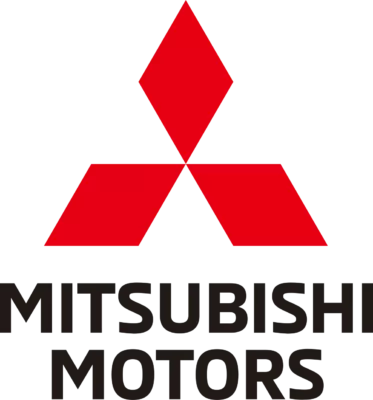In the realm of automotive diagnostics, understanding and deciphering fault codes is paramount. Among the multitude of car brands, Mitsubishi stands out as a reliable and popular choice. To keep your Mitsubishi running smoothly, it’s essential to decode its fault codes accurately. This article serves as your comprehensive guide to the Mitsubishi fault code list. Buckle up as we embark on this journey of automotive enlightenment.
Now, let’s dive into each section of this article to unravel the secrets of Mitsubishi’s fault codes.
Introduction
Mitsubishi vehicles are renowned for their durability and reliability. However, like any mechanical system, they can encounter issues from time to time. This is where understanding Mitsubishi fault codes becomes invaluable.
*Please press the following to search through the Mitsubishi fault code list: CTRL+ F
What Are Mitsubishi Fault Code List?
Fault codes, often referred to as Diagnostic Trouble Codes (DTCs), are alphanumeric codes generated by your vehicle’s onboard computer system. They are like a secret language that your car uses to communicate issues it encounters. Each code corresponds to a specific problem within the vehicle.
The Significance of Mitsubishi Fault Code List
Mitsubishi fault codes serve as diagnostic tools for both car owners and mechanics. They provide vital information about the nature and location of a problem within the vehicle. Knowing how to interpret these codes can save you time and money on repairs.
Common Mitsubishi Fault Codes
Engine-Related Fault Codes
Engine-related fault codes are the most common ones you’ll encounter. These codes often indicate issues with the engine’s performance, emissions, or sensors. Some typical engine-related fault codes include:
- P0300: Random/Multiple Cylinder Misfire Detected
- P0420: Catalyst System Efficiency Below Threshold
- P0171: System Too Lean (Bank 1)
Transmission-Related Fault Codes
Transmission-related fault codes are crucial for diagnosing problems with your Mitsubishi’s transmission system. Examples of transmission-related codes include:
- P0700: Transmission Control System Malfunction
- P0730: Incorrect Gear Ratio
- P0780: Shift Malfunction
Electrical System Fault Codes
Electrical system fault codes pertain to issues with your vehicle’s electrical components. These may include problems with the battery, alternator, or wiring. Common electrical system fault codes include:
- P0562: System Voltage Low
- P0620: Generator Control Circuit Malfunction
- P1614: MIL Request Circuit High Voltage
How to Retrieve Mitsubishi Fault Codes
Retrieving Mitsubishi fault codes is a straightforward process. You’ll need an OBD-II scanner, which is readily available online or at auto parts stores. Follow these steps:
- Locate the OBD-II port in your Mitsubishi (usually beneath the dashboard).
- Plug in the OBD-II scanner.
- Turn the ignition key to the “on” position without starting the engine.
- Follow the scanner’s instructions to retrieve fault codes.
Interpreting Mitsubishi Fault Codes List
Once you’ve retrieved the fault codes, it’s time to interpret them. Each code consists of a series of letters and numbers. The letters often indicate the system or component affected, while the numbers provide specific details about the issue.
DIY Troubleshooting for Mitsubishi Fault Codes List
Clearing Fault Codes
Clearing fault codes is possible if you’ve fixed the underlying issue or if the code was triggered erroneously. To clear the codes:
- Use the OBD-II scanner to access the “Clear Codes” function.
- Follow the scanner’s instructions to erase the codes.
Preventing Recurrence
Preventing fault code recurrence involves addessing the root cause of the issue. Consult your vehicle’s service manual or seek professional help for complex problems.
When to Seek Professional Help
While DIY troubleshooting can resolve many issues, some problems require the expertise of a trained mechanic. If you’re unsure about the severity of a fault code or lack the necessary tools, don’t hesitate to consult a professional.
The Role of Technology in Fault Code Diagnosis
Modern technology has revolutionized fault code diagnosis. Advanced diagnostic tools and smartphone apps now allow car owners to monitor their vehicles’ health in real-time. These innovations make it easier than ever to stay on top of potential issues.
Unlocking Efficiency: The 30 Min DPF Clean Advantage
Tackling the challenges posed by heavy machinery, especially Mitsubishi equipment fault codes, can be daunting. But fret not! There’s a beacon of hope on the horizon, and it’s named the “30 Min DPF Clean.” We offer unmatched Diesel Particulate Filter (DPF) cleaning services in New Jersey, Philadelphia, and Delaware, setting us apart from the competition. Wondering why you should choose us for your machinery’s smooth operation? Let’s delve into the answer.
30 Min DPF Clean: Your Comprehensive Solution
What distinguishes 30 Min DPF Clean is our holistic approach to machinery maintenance. We don’t merely focus on DPF cleaning; we specialize in an array of services, encompassing Exhaust Gas Recirculation (EGR), Selective Catalytic Reduction (SCR), Diesel Oxidation Catalyst (DOC), and Catalytic Converter cleaning. By harnessing cutting-edge technology, we ensure your machinery functions seamlessly, reducing those troublesome fault codes. Get your Mitsubishi’s DPF cleaned today!
Quality Cleaning for Peak Performance
At 30 Min DPF Clean, we recognize that a clean machine is a content machine. That’s why we go the extra mile to eradicate ash, soot, and other residues from your diesel engines. Our exceptional DPF Cleaning service guarantees your machinery’s optimal performance, providing you peace of mind while keeping those fault codes at bay.
Competitive Rates, Exceptional Excellence
Ultimately, 30 Min DPF Clean delivers top-notch service without stretching your budget. Our competitive pricing structure, coupled with exceptional DPF cleaning services, positions us as the obvious choice for anyone seeking to extend the lifespan of their Mitsubishi machinery. So, when your equipment starts conversing through fault codes, consider reaching out to 30 Min DPF Clean. Our adept technicians are skilled in addressing various issues, assisting you in deciphering the Mitsubishi Fault Code List and swiftly restoring your machinery to operation. Remember, in machinery maintenance, it’s not solely about resolving problems—it’s about forestalling them. And 30 Min DPF Clean is your trusted companion on that voyage.
Conclusion
Understanding Mitsubishi fault codes empowers you to take control of your vehicle’s maintenance and repairs. With the right knowledge and tools, you can ensure your Mitsubishi runs smoothly for years to come. Don’t let those mysterious codes intimidate you—decode them and keep your ride on the road!
In the ever-evolving world of automotive technology, staying informed is your best defense against unexpected issues. So, the next time your Mitsubishi displays a fault code, you’ll be well-prepared to tackle it head-on. Happy driving!
FAQs: Your Burning Questions Answered
What do Mitsubishi fault codes mean?
Mitsubishi fault codes are alphanumeric representations of specific issues within your vehicle. Each code corresponds to a particular problem, making it easier to identify and address.
Can I drive my Mitsubishi with a fault code?
It depends on the severity of the code. Some codes indicate minor issues, while others signal potentially serious problems. It’s generally safe to drive with minor fault codes, but it’s best to address them promptly to prevent further damage.
Are all fault codes serious?
Not all fault codes are equally serious. Some may be related to minor sensor glitches, while others could indicate critical engine or safety issues. It’s essential to check and interpret the code to determine its severity.
How often should I check for fault codes?
Regularly checking for fault codes, especially during routine maintenance, can help identify issues before they escalate. An annual check or when you notice unusual symptoms is a good practice.
Can fault codes be cleared without fixing the issue?
While you can clear fault codes, it’s crucial to fix the underlying problem. Clearing codes without addressing the issue is a temporary solution that may lead to more significant problems down the road.
For more information on Mitsubishi equipment and related services, visit the official Mitsubishi website.




